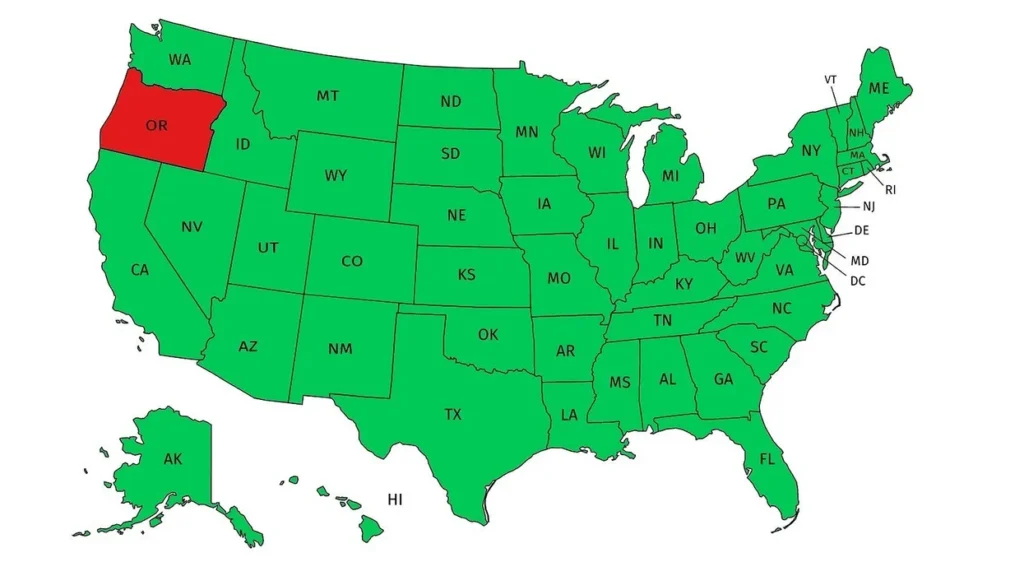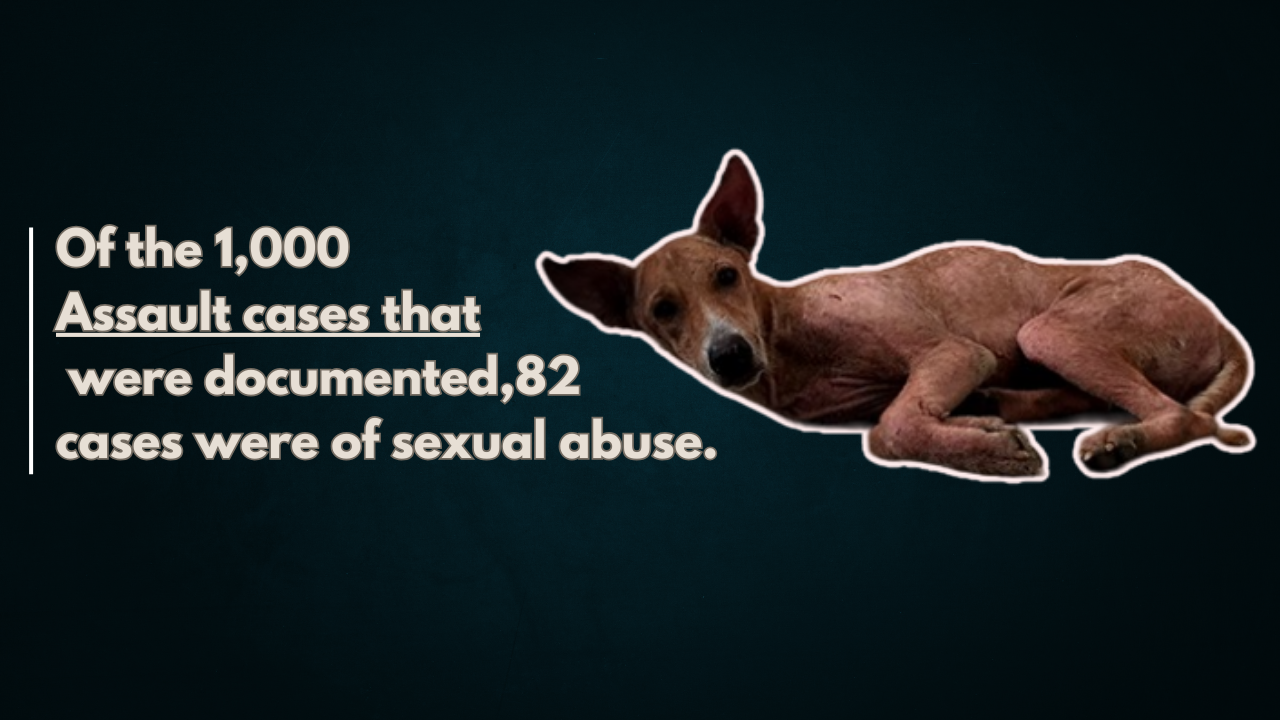“As they say Dogs are the most loyal and lovable animals in this whole world.”
But what if the same animal that gives us so much love, protection, and loyalty, is not safe? They are being mistreated. Humans are taking their cruelty on such sweet animals who even sacrifice their lives for them. I was reading an article this morning and it took my attention to the topic of Dog pornography and Dog pornography laws in the U.S.
With the growth of the internet, Dog pornography is becoming very common in the US these days. The production, distribution, and consumption, of everything. These are not only harmful for animals but it also gives a bad impression on society. When something like this gets circulated on the internet it arouses curiosity in other people’s minds. Which will lead to more crimes and cruelty towards animals. Not only this, but it also makes it sound more common to the people.
Looking at the situation around us it is becoming very very important and critical to understand the legal structure which is surrounding Dog Pornography Laws, such as rules on its production, distribution, and consumption. People need to understand its effects and how it impacts people.
Today we are going to talk about Dog Pornography Laws in the U.S. We will look at when the government took action regarding it. How these Laws started and how are they doing now? What people argue about and how they are affecting our lives. We will also see what other countries are doing about them.
If we simply say we will break down legal complications around Dog pornography in the US. And highlight the importance of following these laws to protect dogs from exploitation and abuse. Our main aim is to raise awareness about the illegality of bestiality (that is animal pornography) to prevent such crimes. As humans, it is our moral duty to support laws that protect animals and their rights.
Historical Overview of the Dog Pornography Laws in the U.S.
In the past, there were rules about what could be shown in media, like books or movies. At first, these rules were very strict and aimed to keep things “clean.” In 1873, the Comstock Act was made, which banned things considered “dirty.” But it was criticized because it was too broad and stopped lots of things from being shared.
Some Landmarks Cases In the Context of Dog Pornography Laws in the U.S. :-
- Roth v. United States (1957) :- In 1957, there was a big court case called Roth vs. United States. It changed how people thought about what was okay to show. The court decided that some things were too inappropriate and didn’t have protection from free speech laws.
For Full Commentary of the case, you can visit the Supreme Court website.
Timeline of the case
- Argued Started On April 22, 1957
- Decided On June 24, 1957
- Miller v. California (1973):- Then, in 1973, another court case called Miller v. California happened. This set up a test to see if something was too inappropriate to be shown. It said that if most people would find something too dirty, it shouldn’t be allowed to be shown in public.
For Full Commentary of the case, you can visit the Supreme Court website.
Timeline of the case
- Argued Started On January 18, 1972 & January 19, 1972
- Reargued On November 7, 1972
- Decided On June 21, 1973
Talking about laws for stuff like dog pornography came much later. In the beginning, laws mostly focused on what was right and wrong for people, not animals. But as time went on and people started caring more about animal welfare, laws about dog pornography started to be made.
History of Bestiality Laws
Human sexual relations with animals, a behavior known as bestiality, have existed since the beginning of human history in every place and culture in the world whether it is a Roman empire, or in any part of the world.
The Deep Bond Between Humans and Animals: A Journey Through Time
Our connection with animals goes back thousands of years. Before we had farms and settled communities, humans relied on animals for food and materials. This relationship has evolved a lot over time, shaping both our history and our present. In this blog, we’ll explore our early ties with animals, how these relationships developed, and the first laws that protected them.

Early Human-Animal Relationships
About 12,000 years ago, humans lived as hunter-gatherers. They depended on animals for food and materials like bones and hides. These early humans hunted animals, but they also started to form relationships with them. Wolves were the first animals to become part of human societies, acting as both hunting partners and companions.
When the last Ice Age ended around 8,000 years ago, humans began to tame and breed animals for specific purposes. Cattle and pigs were among the first domesticated animals. They provided food, milk, and materials like leather. About 3,000 years later, humans started domesticating horses, camels, donkeys, and birds. These animals were important for transportation, farming, and trade.
The Economic Value of Animals
In early human societies, animals were very valuable. They were not just sources of food but also essential for farming and transport. Domesticating animals marked a big change from hunting to farming, leading to more settled communities.
This value of animals is clear in some of the earliest written laws. The Code of Hammurabi, created around 1750 B.C.E. in ancient Mesopotamia (modern-day Iraq), is one of the oldest known legal codes. It has 282 rules, many of which are about animals. These laws show how important animals were in early human life. For example, the code includes rules about compensating owners if their animals are harmed, showing that animals were considered valuable property.
The Code of Hammurabi
The Code of Hammurabi is an interesting document. It shows how early societies viewed animals and their importance. Some rules in the code are:
- If someone’s animal is harmed, the person responsible must pay the owner.
- If an animal injures another person, the owner of the animal must pay for the damages.
These rules show that early humans knew the need to protect animals and ensure their proper treatment. It also shows that animals were a key part of daily life and work.
The Evolution of Animal Laws
Over time, the reasons for protecting animals have changed. Early laws focused on the economic value of animals and their role in society. But as societies grew, the moral and ethical treatment of animals became more important.
Today, animal welfare laws are much more detailed. They not only protect the economic interests of animal owners but also consider the well-being and rights of the animals. Modern laws aim to prevent cruelty and ensure that animals are treated well.
Our relationship with animals has deep roots, going back thousands of years. From being hunting partners to becoming essential parts of our farms and transport, animals have always been closely linked to human life. The early laws, like the Code of Hammurabi, show the important role animals played in ancient societies and the need to protect them.
As we look back at our shared history with animals, it’s clear that this bond has shaped our development and continues to influence us today. Understanding this history helps us appreciate the importance of treating animals with respect and care, ensuring a kind and humane society for all.
The idea that animals have their own rights, separate from humans, is quite new. It wasn’t until the 1800s in Victorian England that people began to seriously think about animal welfare. Back then, there were concerns about how animals were treated in experiments, transportation, and entertainment like cockfighting and foxhunting. This marked the start of significant changes in laws to protect animals.
Early Efforts in England
In 1822, England passed a law banning cruelty to cattle( Most of them are household cattle). This was a big step forward for animal welfare. Just two years later, Thomas Buxton, a member of parliament, founded the Society for the Prevention of Cruelty to Animals (SPCA), which later became the Royal Society for the Prevention of Cruelty to Animals (RSPCA). This was the first animal welfare charity in the world.
The RSPCA focused on the welfare of working animals, like horses used in coal mines. They worked to stop animal abuse in public markets, prosecute those who were cruel to animals, and educate the public on better treatment of animals.
Spread to the United States
Henry Bergh, an American diplomat, saw the work of the RSPCA in England and was inspired to start something similar in the United States. He founded the American Society for the Prevention of Cruelty to Animals (ASPCA) and became its first president. Bergh helped change animal treatment laws in New York during the 1860s, introducing the term “cruelty” and expanding the list of punishable offenses. His success in New York led other states to create their own SPCAs and strengthen their anti-cruelty laws.

Modern Animal Welfare and the Concept of “The Link”
Recently, the understanding of animal cruelty has grown. One important idea is “The Link,” which suggests a connection between animal cruelty and violence against people. This means that people who are cruel to animals might also harm humans. Recognizing animal abuse as a warning sign of broader violence has led to new laws and earlier interventions.
“The Link” has had a big impact. For example, the Federal Bureau of Investigation (FBI) now includes four types of animal cruelty, including bestiality, in its National Incident-Based Reporting System (NIBRS). This helps law enforcement track and respond to animal cruelty more effectively. Some laws now also recognize animal abuse in domestic violence situations, and there are many animal welfare organizations that do tremendous work in this field.
The FBI and Animal Cruelty
The Federal Bureau of Investigation (FBI) has taken a significant step in the fight against animal cruelty by including such offenses in its National Incident-Based Reporting System (NIBRS). This inclusion marks a pivotal development in how law enforcement agencies track and respond to incidents of animal cruelty, including bestiality. By categorizing animal cruelty as a distinct offense, the FBI recognizes its serious nature and its potential connection to other forms of violence, such as domestic abuse and serial killings.
The decision to include animal cruelty in NIBRS aligns with growing awareness and research showing that individuals who commit acts of cruelty towards animals often exhibit violent behaviors towards humans. Studies have consistently demonstrated a correlation between animal abuse and violent crimes, including homicide, sexual assault, and domestic violence. By tracking animal cruelty incidents, law enforcement can identify patterns that may indicate a propensity for more severe criminal behavior.
NIBRS, which collects data on various crimes from participating law enforcement agencies, now enables the collection of detailed information about animal cruelty incidents. This data includes specifics about the offense, the victims, and the offenders. Such comprehensive data collection facilitates a better understanding of the prevalence and nature of animal cruelty, aiding in the development of targeted interventions and prevention strategies.
Moreover, the inclusion of animal cruelty in NIBRS underscores the broader societal recognition of animals as sentient beings deserving of protection from harm. It reflects a shift in societal attitudes towards a more compassionate and ethical treatment of animals. By formally tracking these offenses, the FBI and law enforcement agencies can allocate resources more effectively, train officers to handle such cases with the seriousness they deserve, and work towards preventing future incidents.
This initiative also supports the efforts of animal welfare organizations and advocates who have long argued for stronger enforcement of animal cruelty laws. It provides a mechanism for these organizations to collaborate more closely with law enforcement, enhancing the overall response to animal cruelty. Ultimately, this move by the FBI represents a crucial step towards a more humane society that recognizes and addresses the link between animal cruelty and broader issues of violence and public safety.
Changes in Bestiality Laws
Bestiality, or sexual acts with animals, has long been prohibited, but the reasons for criminalizing it have changed. At first, laws focused on moral issues and the economic value of animals. Over time, concerns about animal rights and welfare became more important. Today, many laws against bestiality fall under broader animal cruelty laws.
States like Alaska, Colorado, and Maine have laws that define bestiality as a form of animal cruelty. These laws reflect both a concern for animal welfare and the idea that animal abuse can be a sign of other violence.
Animal welfare laws have come a long way since the 1800s. From early efforts in Victorian England to modern laws influenced by the idea of “The Link,” the focus has shifted from economic concerns to a broader understanding of animal rights and welfare. Recognizing and stopping animal cruelty is crucial, not only for the sake of animals but also to prevent potential violence in human society. Understanding this evolution helps us see why it’s important to treat animals with kindness and respect, ensuring a more compassionate world for all living beings.
Bestiality, or sexual acts with animals, has historically been condemned and criminalized, but the rationale behind these laws has evolved significantly over time. Initially, prohibitions against bestiality were rooted in moral and religious beliefs, as well as concerns about the economic value of livestock. In many cultures, sexual acts with animals were seen as morally depraved and an affront to societal norms.
Additionally, changes in bestiality laws are influenced by the recognition of its potential links to other forms of violence. Similar to other forms of animal cruelty, acts of bestiality are now understood to be indicative of broader behavioral issues, including a propensity for violence towards humans. This understanding has reinforced the need for robust legal frameworks to address and prevent bestiality.
Public awareness and advocacy have also played a critical role in shaping contemporary bestiality laws. Animal rights organizations and activists have campaigned for stronger legal protections for animals, highlighting the need for laws that explicitly criminalize sexual acts with animals. These efforts have led to legislative changes that better protect animals and reflect society’s evolving views on animal welfare.
In conclusion, the changes in bestiality laws over time illustrate a significant shift from a focus on moral and economic considerations to an emphasis on animal rights and welfare. This evolution in legal thinking underscores the growing societal commitment to protecting animals from harm and recognizing their inherent value as sentient beings. Through updated legislation and increased awareness, society is moving towards a more ethical and humane treatment of animals.
Exploring Dog Pornography Laws Across the U.S : A State-by-State Guide
| State | Government Website | Laws Regarding Animal Cruelty | Punishment |
| Alabama | https://www.alabama.gov/ | Alabama Code Title 13A, Chapter 11, Article 15 (Cruelty to Animals) | Up to 10 years in prison and/or a fine up to $5,000 |
| Alaska | https://alaska.gov/ | Alaska Statutes Title 11, Chapter 61 (Offenses Against Public Order) | Up to 1 year in prison and/or a fine up to $25,000 |
| Arizona | https://az.gov/ | Arizona Revised Statutes Title 13, Chapter 29 (Cruelty to Animals) | Up to 2 years in prison and/or a fine up to $150,000 |
| Arkansas | https://portal.arkansas.gov/ | Arkansas Code Title 5, Subtitle 6, Chapter 62 (Animal Welfare) | Up to 6 years in prison and/or a fine up to $10,000 |
| California | https://www.ca.gov/ | California Penal Code Section 597 (Cruelty to Animals) | Up to 3 years in prison and/or a fine up to $20,000 |
| Colorado | https://www.colorado.gov/ | Colorado Revised Statutes Title 18, Article 9 (Cruelty to Animals) | Up to 18 months in prison and/or a fine up to $100,000 |
| Connecticut | https://portal.ct.gov/ | Connecticut General Statutes Chapter 435 (Cruelty to Animals) | Up to 5 years in prison and/or a fine up to $5,000 |
| Delaware | https://delaware.gov/ | Delaware Code Title 11, Chapter 5, Subchapter II (Cruelty to Animals) | Up to 3 years in prison and/or a fine up to $5,000 |
| Florida | https://www.flgov.com/ | Florida Statutes Title XLVI, Chapter 828 (Cruelty to Animals) | Up to 5 years in prison and/or a fine up to $10,000 |
| Georgia | https://georgia.gov/ | Georgia Code Title 4, Chapter 11 (Animal Protection) | Up to 12 months in prison and/or a fine up to $5,000 |
| Hawaii | https://portal.ehawaii.gov/ | Hawaii Revised Statutes Title 12, Chapter 711 (Cruelty to Animals) | Up to 1 year in prison and/or a fine up to $2,000 |
| daho | https://www.idaho.gov/ | Idaho Code Title 25, Chapter 35 (Cruelty to Animals) | Up to 6 months in prison and/or a fine up to $5,000 |
| Illinois | https://www2.illinois.gov/Pages/default.aspx | Illinois Compiled Statutes Chapter 510, Act 70 (Humane Care for Animals Act) | Up to 1 year in prison and/or a fine up to $2,500 |
| Indiana | https://www.in.gov/ | Indiana Code Title 35, Article 46 (Cruelty to Animals) | Up to 180 days in prison and/or a fine up to $1,000 |
| Iowa | https://www.iowa.gov/ | Iowa Code Title XVI, Chapter 717B (Animal Cruelty) | Up to 2 years in prison and/or a fine up to $6,250 |
| Kansas | https://www.kansas.gov/ | Kansas Statutes Chapter 21, Article 64 (Cruelty to Animals) | Up to 1 year in prison and/or a fine up to $1,000 |
| Kentucky | https://kentucky.gov/Pages/home.aspx | Kentucky Revised Statutes Chapter 525 (Cruelty to Animals) | Up to 5 years in prison and/or a fine up to $10,000 |
| Louisiana | https://www.louisiana.gov/ | Louisiana Revised Statutes Title 14, Chapter 14 (Cruelty to Animals) | Up to 10 years in prison and/or a fine up to $25,000 |
| Maine | https://www.maine.gov/ | Maine Revised Statutes Title 7, Part 9, Chapter 739 (Animal Welfare) | Up to 1 year in prison and/or a fine up to $2,000 |
| Maryland | https://www.maryland.gov/ | Maryland Code Criminal Law Title 10, Subtitle 6 (Cruelty to Animals) | Up to 3 years in prison and/or a fine up to $5,000 |
| Massachusetts | https://www.mass.gov/ | Massachusetts General Laws Chapter 272, Section 77 (Cruelty to Animals) | Up to 7 years in prison and/or a fine up to $5,000 |
| Michigan | https://www.michigan.gov/ | Michigan Compiled Laws Chapter 750, Act 328 (Animal Cruelty) | Up to 7 years in prison and/or a fine up to $5,000 |
| Minnesota | https://mn.gov/portal/ | Minnesota Statutes Chapter 343 (Cruelty to Animals) | Up to 2 years in prison and/or a fine up to $5,000 |
| Mississippi | https://www.ms.gov/ | Mississippi Code Title 97, Chapter 41 (Cruelty to Animals) | Up to 5 years in prison and/or a fine up to $5,000 |
| Missouri | https://www.mo.gov/ | Missouri Revised Statutes Title 14, Chapter 578 (Cruelty to Animals) | Up to 1 year in prison and/or a fine up to $1,000 |
| Montana | https://mt.gov/ | Montana Code Title 45, Chapter 8 (Cruelty to Animals) | Up to 2 years in prison and/or a fine up to $2,500 |
| Nebraska | https://www.nebraska.gov/ | Nebraska Revised Statutes Chapter 28, Article 10 (Cruelty to Animals) | Up to 5 years in prison and/or a fine up to $10,000 |
| Nevada | https://nv.gov/ | Nevada Revised Statutes Title 50, Chapter 574 (Cruelty to Animals) | Up to 1 year in prison and/or a fine up to $2,000 |
| New Hampshire | https://www.nh.gov/ | New Hampshire Revised Statutes Title XLIII, Chapter 644 (Cruelty to Animals) | Up to 1 year in prison and/or a fine up to $2,000 |
| New Jersey | https://www.nj.gov/ | New Jersey Statutes Title 4, Chapter 22 (Prevention of Cruelty to Animals) | Up to 6 months in prison and/or a fine up to $1,000 |
| New Mexico | https://www.newmexico.gov/ | New Mexico Statutes Chapter 30, Article 18 (Cruelty to Animals) | Up to 1 year in prison and/or a fine up to $1,000 |
| New York | https://www.ny.gov/ | New York Consolidated Laws Agriculture and Markets Article 26 (Offenses Relating to Animals) | Up to 1 year in prison and/or a fine up to $1,000 |
| North Carolina | https://www.nc.gov/ | North Carolina General Statutes Chapter 14, Article 47 (Cruelty to Animals) | Up to 120 days in prison and/or a fine up to $500 |
| North Dakota | https://www.nd.gov/ | North Dakota Century Code Title 36, Chapter 21 (Cruelty to Animals) | Up to 1 year in prison and/or a fine up to $2,000 |
| Ohio | https://ohio.gov/ | Ohio Revised Code Title 29, Chapter 959 (Crimes Relating to Animals) | Up to 90 days in prison and/or a fine up to $750 |
| Oklahoma | https://www.ok.gov/ | Oklahoma Statutes Title 21, Chapter 67 (Cruelty to Animals) | Up to 5 years in prison and/or a fine up to $5,000 |
| Oregon | https://www.oregon.gov/ | Oregon Revised Statutes Title 16, Chapter 167 (Animal Abuse) | Up to 1 year in prison and/or a fine up to $6,250 |
| Pennsylvania | https://www.pa.gov/ | Pennsylvania Consolidated Statutes Title 18, Chapter 55 (Cruelty to Animals) | Up to 7 years in prison and/or a fine up to $15,000 |
| Rhode Island | https://www.ri.gov/ | Rhode Island General Laws Title 4, Chapter 1 (Cruelty to Animals) | Up to 11 months in prison and/or a fine up to $1,000 |
| South Carolina | https://www.sc.gov/ | South Carolina Code Title 47, Chapter 1 (Cruelty to Animals) | Up to 5 years in Prison |
What’s the Law Now (Current Laws In The US Regarding Dog Pornography)
Nowadays, there are rules about what can and can’t be shown online or in videos, both at the national level and in each state.
At the national level, there are still rules from the Miller test about what’s too dirty to be shown. But when it comes to dog pornography or horse pornography laws, there aren’t many specific laws. The Animal Crush Video Prohibition Act is one of the few laws that talk about cruelty to animals in videos. It says it’s not okay to make, share, or sell videos that are really cruel to animals, including dog pornography. But it doesn’t cover everything.

In each state, the rules can be different. Some states have their own laws saying dog pornography is illegal and there are strict punishments for it. But other states don’t have clear rules about it, and it can be hard for the police to know what to do.
The internet is huge and allows people to stay unidentified, which makes it hard to track down where illegal content comes from. Offenders often use encryption and anonymous browsing to conceal their identities and locations.
It’s tough to enforce laws against dog pornography. The internet makes it easy for people to share things from one place to another, and it’s not always clear which laws apply. It takes a lot of work for the police to find out who’s making or sharing these videos, and they need help from different parts of the government to do it.
References
For those interested in delving deeper into the topic, here are some valuable resources:
- Miller v. California Case Summary( https://www.oyez.org/cases/1971/70-73 )
- Overview of U.S. Pornography Laws( https://www.law.cornell.edu/wex/obscenity )
- Comparative Analysis of Animal Cruelty Laws( https://www.animallaw.info/ )
- Roth v. United States (1957) Supreme Court Judgement ( https://supreme.justia.com/cases/federal/us/354/476/ )
- Miller v. California (1973) Supreme Court Judgement ( https://supreme.justia.com/cases/federal/us/413/15/ )

![Read more about the article Listing Of Websites Banned In India Information Internet Censorship[2025 Updated]](https://pornography-laws.com/wp-content/uploads/2024/12/Leonardo_Phoenix_10_A_dramatic_highcontrast_illustration_featu_0-1-300x170.jpg)


